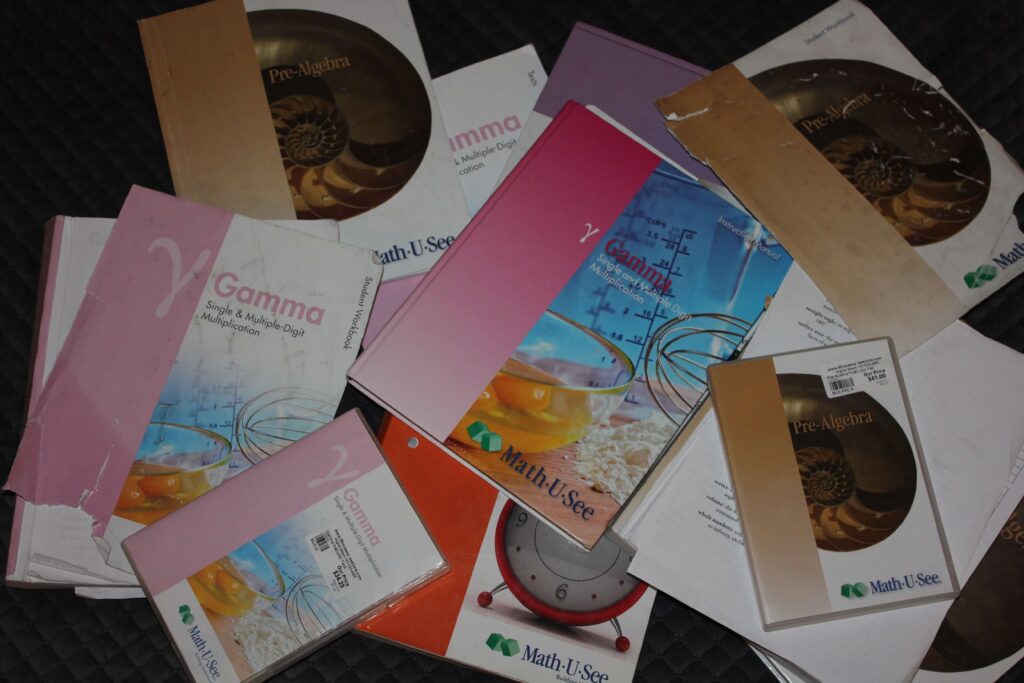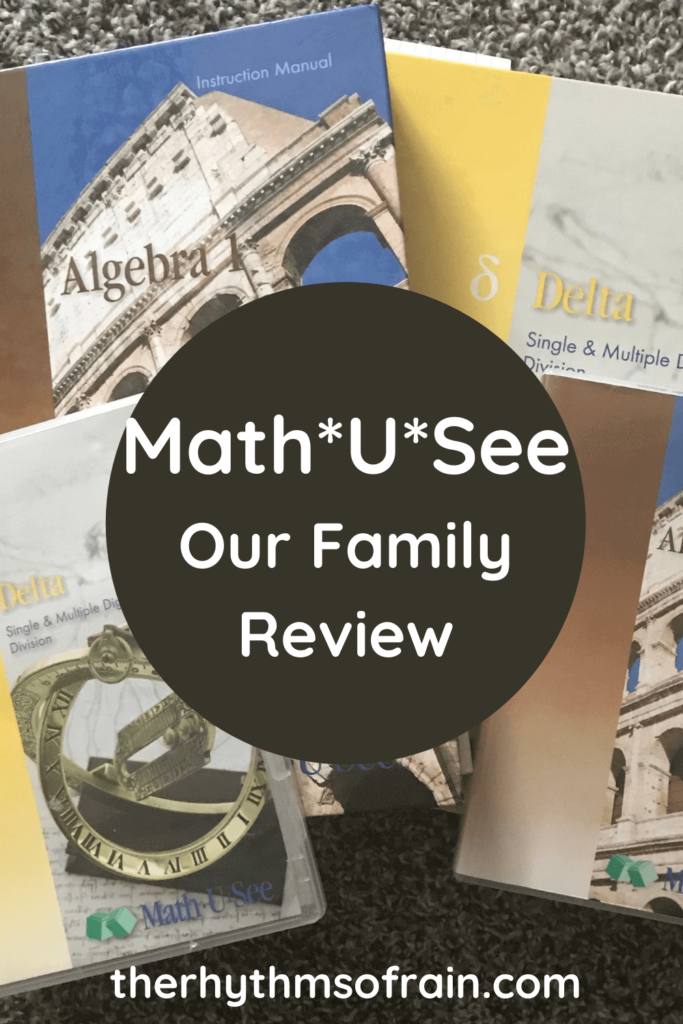I get it. Picking a homeschool math curriculum is no easy task. Math can either be the easiest part of your homeschooling day…or the bane of your existence. There’s often no middle ground. I’ve had it both ways myself, depending on the child and the particular lesson we’re on. Mostly I would say we’re somewhere in the middle. We had a few years I was not actually sure we were going to live through to see another math lesson. But now we’ve hit a sort of an easier, tentative stride with our math career. That being said, be sure and check back with me next year when we’ve hit full-on algebra. (!) We have, however, found a math curriculum that really works for us. Here’s my review of Math-U-See:

Math Curricula: Spiral or Mastery
A homeschool math curriculum either takes a spiral or a mastery approach. A spiral approach introduces your student to a new, usually small concept each day followed by some practice on that concept. The student then moves on to a continual review of other concepts previously learned. The curriculum adds new depth to concepts incrementally and offers continuous review of concepts from year to year.
In contrast, a mastery approach introduces a new concept less often. However, the curriculum normally presents the concept in a larger chunk that the student may not absorb all at once (and wouldn’t be expected to). The accompanying exercises then hammer home that concept until it is, well, mastered. Both systems can work equally well depending on the child, and the parent of course. There is no right or wrong answer here.
I have experimented with other math curricula, both spiral and mastery, but after a few years discovered that Math-U-See works best for us. I have found its homeschool curricula to be helpful, mom-friendly, and just the right amount of daily work (30-60 minutes, depending on the day).
Math-U-See follows the mastery approach. Each grammar-school level consists of “only” thirty lessons, which are usually very doable over the course of a school year. My son’s current algebra course, which we’ve just started, in contrast, contains thirty-five lessons. Each algebra lesson has one less worksheet in it, however, which may balance the length out. The structure is easy to follow, a huge positive for moms.
A Typical Math Week
Each time we hit a new lesson, we start with the DVD video. I appreciate that watching the (usually engaging) lesson takes only a few minutes. Sometimes the lessons for my third grader were only three or so minutes long. The pre-algebra ones ranged from about eight to ten minutes. They were long enough for me to grasp each lesson’s concept and how to solve the problems correctly, but not too long to become tedious. My sons might not understand the lesson fully, but as long as I do we manage okay.
After their DVD lesson the kids hit the workbooks. Each lesson contains six regular practice sheets (labeled A-F) and one application page (also called the “honors lesson), labeled G, which is usually more challenging, often involving real-world math problems. The first three practice sheets, A-C, contain solely that lesson’s concept. The last three, D-F, are systematic review pages, going over previous concepts from both that level and previous ones.
We most often take three days to cover pages A-F of a lesson. However, some of the lessons are simply more challenging than others. We do not keep to any true timetable in those cases. Sometimes we might only cover a page, or even a half page if one of them is getting extra frustrated that day. I feel it’s more productive to do only a few problems right and call it a day than to try to push past the frustration point. Picking up the work again the following day usually goes better for us.
Generally speaking, by the time they finish practice sheet C, they have that week’s concept down. Then they move on to the review pages, all very necessary for remembering previously mastered concepts. This past year I especially appreciated the constant review of fractions in the pre-algebra curriculum, as that remained a challenging area for my seventh grader.
Assessments
The kids complete the lesson’s test after they finish practice sheet F. It’s been rewarding to see their progression from often struggling through that lesson’s concept on practice sheet A to confidently flying through the test less than a week later.
A few times, though, they still aren’t ready to take that lesson’s test even after completing all the practice sheets. In those cases, Math-U-See provides a great resource for further practice: a worksheet generator. I am easily able to print off an additional worksheet or two for the lessons in which they need additional practice beyond what the workbook already provides. Usually that does the trick, and they find their footing.
After the test, either that same day or the next, we try out that lesson’s application/honors page, practice sheet G. The material on these pages is never included in the lesson’s tests, so we always do them at the end. The application pages challenge both my sons to think about math in a new way and often how to apply it to daily life situations. I can’t say this is usually the favorite part of their math week because sometimes they just don’t feel up for the challenge (especially by the pre-algebra stage). The application pages often involve a substantial amount of higher level math thinking. Kids who absolutely love math will probably enjoy the extra challenge the most.
For even more review and solidifying your child’s progress, Math-U-See periodically includes unit tests, covering a review of several lessons, placed after certain chapter tests. Then, at the very end of the course, we hit the moment we’ve been waiting for–the final comprehensive exam.
Ask most veteran homeschoolers–when math is complete for the year, it’s truly time to celebrate.
And then it’s on to purchasing next year’s curriculum, ready to begin again.

Does your family love math, hate it, or fall somewhere in between? Have you found a math curriculum out there that works for you? Would love to have your comments below!
